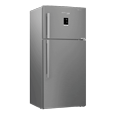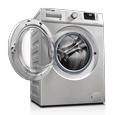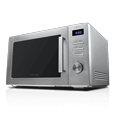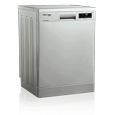

Our Blog
Everything you need to know
about our products & more
Subscribe
How To Use Dishwasher Machine for The First Time - Easy Guide

Once you have experienced the convenience of a dishwasher in your home, it becomes an essential appliance you can't imagine living without. This modern gadget not only saves you valuable time but also contributes to cost savings. However, despite its incredible benefits, many individuals struggle to achieve optimal results from their dishwashers due to improper loading, incorrect program selection, or other operational errors.
Here's an easy guide for those who want to learn how to use your dishwasher for the first time or rectify the mistakes made while using the device. With this guide, you can maximise the efficiency of your dishwasher uses while avoiding common errors.
Step 1 - Ensuring Adequate Dishwasher Salt
A dishwasher salt is used in addition to detergent to soften the water. By softening the water, dishwasher salt improves your detergent’s effectiveness, while also keeping your dishwasher from breaking down frequently. So, it is important to ensure that the salt compartment is adequately filled when using your dishwasher for the first time or after refilling. To do so, first locate the screw cap covering the dishwash powder compartment, usually found at the bottom of the dishwasher. Refer to your user manual if unsure. Add the powder until the compartment is full, then replace the screw cap and the bottom rack.
Step - 2 Adding Rinse Aid
Add a rinse aid to the designated compartment to prevent water stains on your dishes. Open the compartment's lid and pour the rinse aid into the fill line. Close the lid. Monitor the rinse aid indicator to know when to refill it.
Step 3 - Loading the Dishes Correctly
Whether table top dishwasher or portable dishwasher, ensure that you follow all the steps given below for the best results.
Scrape Off the Leftovers - Begin by giving your dishes a quick pre-treatment before placing them in the dishwasher. Instead of directly loading utensils with food remnants, take a moment to scrape off leftovers and give the dishes a light rinse. This step ensures that your dishwasher operates efficiently and keeps your dishes sparkling clean.
Load the Lower Rack - While arranging dishes, following an organised approach is best for optimal results. Start by loading the lower rack from the inside out. Place larger items such as pans, kadhais, pots, and casserole dishes upside down. Position them to face the spray nozzles, enhancing their exposure to the cleaning process. For plates, make use of the designated plate holders to ensure stability.
For Indian stainless steel plates with broader edges, alternate their placement on different racks to facilitate even water flow.
Remember to prevent direct contact between silverware and stainless steel items to prevent potential chemical reactions during the wash cycle.
Load the Upper Rack - Moving on to the upper rack, focus on smaller items like bowls, mugs, cups, glasses, and small plates. Arrange these items upside down and at an angle like the lower rack. This positioning allows the water jets to penetrate the dishes effectively for a thorough cleanse. For delicate items like glasses, consider placing them at an angle to prevent any movement during the wash. If your dishwasher offers a specific compartment for ladles, spoons, and forks, utilise it. Otherwise, allocate space following the user manual's instruction .
Use the Right Amount of Dishwasher Detergent - Maintain the right balance of dishwasher detergent for optimal cleaning outcomes. Adhere to the recommended dosage mentioned on the detergent label, regardless of the level of dirtiness or grease on your dishes. Overloading with detergent doesn't improve the cleaning process; it may lead to detergent residue on your dishes. If you are using dishwasher tablets, only use one per wash cycle. Never substitute hand wash detergents for dishwasher detergents, as they are formulated differently and can affect the performance of your dishwasher.
Step 4 - Learning To Run the Dishwasher Machine Correctly
Learning how to wash dishes in the dishwasher revolves around selecting the appropriate program for optimal results. It includes the following.
Light Cycles - Opt for lighter cycles like eco wash or quick wash for energy efficiency and minimal water consumption, suitable for lightly soiled breakfast and snack utensils.
Intense Cycles - Choose intense or high-temperature cycles when tackling heavily soiled dishes with stubborn stains or baking residues.
Dryer Cycle - Decide between a drying program for immediate use or air drying to save energy.
Step 5 - Cleaning the Dishwasher
Keeping the dishwasher machine clean for peak performance is vital. Follow these steps to maintain the longevity of any dishwasher machine for home.
Exterior Care - Clean the outside using soap, water or all-purpose cleaner for plastic models and kitchen appliances or glass cleaner for stainless steel ones. Wipe with a cloth to prevent electronic damage.
Filter Upkeep - Regularly clean the bottom filter to prevent clogs. Wash with warm water and soap, reinstall, and perform this task 1-2 times monthly to eliminate grime.
Parts Cleaning - Wash removable accessories under tap water. For tough grime, use a brush or sponge to remove grease.
Tub Cleansing - Occasionally, cleanse the interior and rubber gasket, then run a hot cycle with white vinegar on the top rack. Air-dry with the door open for a spotless kitchen dishwasher.
You now know the steps to master how to use a dishwasher without much hassle. Adhering to these steps, you will get spotless dishes with each dishwasher use and save water, energy, and time.
Tag Cloud

Microwaves have stood the test of time and have proven to be an energy-saving boon,

During the summer months, nothing is more comforting than a glass of cold water or
Subscribe
Popular Blogs
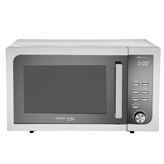 What is a Grill Microwave Oven & How to Choose One? | Voltas Beko
What is a Grill Microwave Oven & How to Choose One? | Voltas Beko
What is a grill microwave oven?
If you ever shopped for a microwave online or at the store, no doubt you may have come across several types of microwaves. A microwave
Read More... How do I choose a dishwasher?
How do I choose a dishwasher?
Having an empty basin was a myth until the invention of the dishwasher. We understand what a hassle it is to wash the dishes and crockery, and if you have
Read More... Smart Ways To Maximize Your Fridge Space
Smart Ways To Maximize Your Fridge Space
To remove things from and to place things in a messy refrigerator can be a headache. Therefore, it is better to organize and compartmentalize food items. Maybe you have extra
Read More...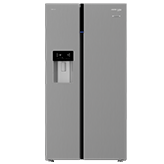 Interesting Facts About Side by Side Refrigerator
Interesting Facts About Side by Side Refrigerator
When shopping for a refrigerator, you have a choice between a single door and a side by side double door fridge. How often have you brought a month’s worth of
Read More...Recent Blogs
 Organise Your Fridge: Best Guide to Manage Storage Inside - Know How
Organise Your Fridge: Best Guide to Manage Storage Inside - Know How
Have you ever had trouble finding that hunk of cheddar cheese you could swear you had in your fridge? Or have you ever made a trip to the grocery store
Read More...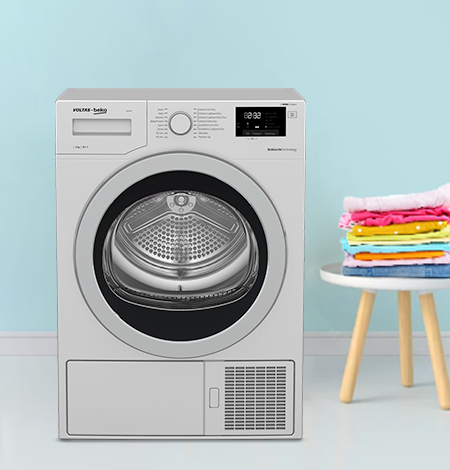 Can You Wash & Dry Shoes in Washing Machine - How to Guide
Can You Wash & Dry Shoes in Washing Machine - How to Guide
Clean and well-maintained shoes reveal much about an individual’s character, values, habits, and overall lifestyle. They can help create a good first impression. However, manually washing shoes requires a lot
Read More... NeoFrost™ Dual Cooling Fridge by Voltas Beko - What Advantage Does That Serve?
NeoFrost™ Dual Cooling Fridge by Voltas Beko - What Advantage Does That Serve?
Imagine you’re hosting a party at your house and have invited your friends over. You ask them to grab some cold drinks from the refrigerator. However, the moment they open
Read More...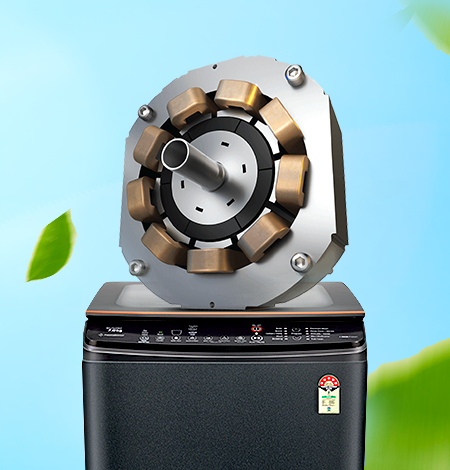 Energy Efficient Washing Machine by Voltas Beko Can Cut Electricity Bill Easily
Energy Efficient Washing Machine by Voltas Beko Can Cut Electricity Bill Easily
Have you ever looked at your electricity bill and wondered how it got so high? With the increasing living costs, it is important to take every necessary step to cut
Read More...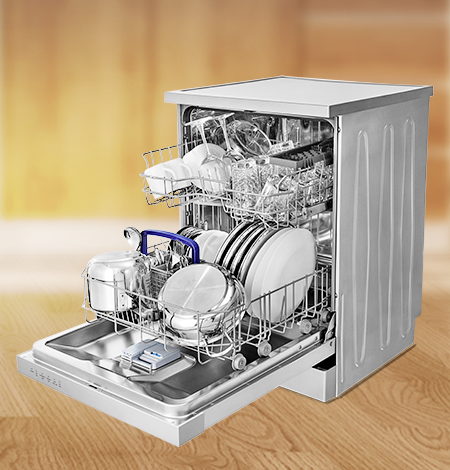 5 Reasons Why You Should Buy a Voltas Beko Full-Size Dishwasher
5 Reasons Why You Should Buy a Voltas Beko Full-Size Dishwasher
Dirty utensils in the sink are always displeasing. They not only look repulsive but also remind you of the impending task of washing them. If not cleaned on time, the
Read More...


